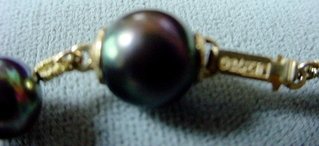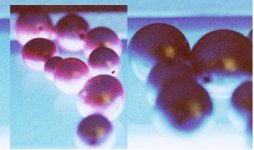V
Valeria101
Guest
Kiki said:Hi Caitlin,
I bought them when I was in St Thomas while on a cruise to the Virgin Is. and Puerto Rico. That was in 1968.
The FAQ page on Cortez Pearls writes that cultivation started in 1993, with rounds available three years later - too late for your strand.
Tahitian black pearls were already around - with cultivation trials started in the early 60s. It would really be way cool if your strand turned out to be some of those! The stupendous colors on your pearls must be coming either from some treatment or thick nacre... the later I'd expect on pearls from early cultivation efforts. Same goes for the shape and size. Fingers crossed!
Those are very striking pearls you've got!
Last edited by a moderator:







![FishEye Pearl [%P].jpg](/data/attachments/1/1161-615462a9d288fca99059586e5c29a7b1.jpg?hash=YVRiqdKI_K)